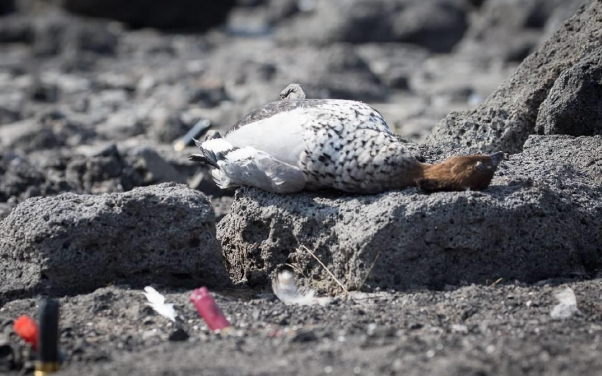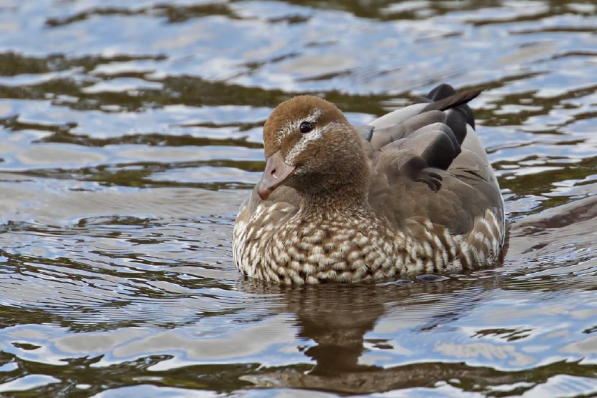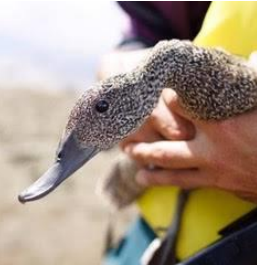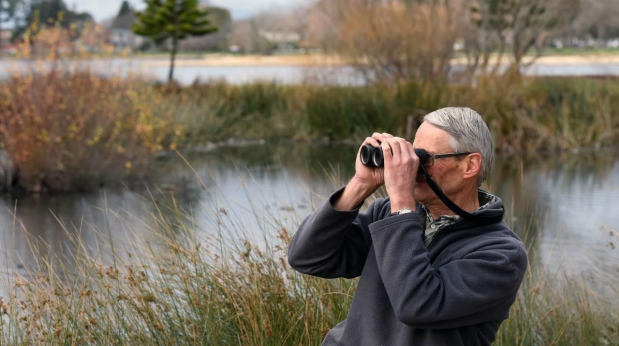‘A war zone’: is Victoria hunting its native ducks to extinction?
By Maeve McGregor
Updated July 12 2022 – 10:17am, first published July 10 2022 – 12:00pm
It always starts early.
The pounding, unbroken patter of gunfire; the eerie symphony of wails which follow. The natural serenity of the wetlands lost to the spectre of unnatural death and suffering.
Though long outlawed in Western Australia, Queensland and New South Wales, the killing season lives on in Victoria, with June 13 marking the end to the longest season granted to shooters since 1986.
“It’s like a war zone out there,” said Laurie Levy, who founded the Coalition Against Duck Shooting nearly 40 years ago. “It’s animal abuse on a large scale – most birds are shot in the stomach and sustain horrific injuries.
“It’s a really frightful place to be.”
To the minds of those unacquainted with the grim particulars of duck shooting, Levy’s war zone analogy might, at first glance, seem far-fetched, or at least heavily-freighted. Not so, says Levy, who told me one of his rescuers was shot in the face by a rogue bullet during the 2011 duck shooting season.
“She was extremely lucky to have survived,” he said, recounting the nine pellets lodged in her face, some of which couldn’t be retrieved.
Seized with the significance of the moment, Levy said he and his team of rescuers quickly acquired 125 pairs of high-grade ballistic goggles, not unlike those used in the armed forces.
They’ve never since ventured out without them.
Those who oppose recreational duck shooting – which is anything between 65 and 90 per cent of Victorians, depending on one’s choice of poll – uniformly object to its gratuitous side; the notion of killing for killing’s sake.

A downed Australian wood duck. Photo: Kim Wormald
Unknown to most, however, says Levy, is the “unimaginable pain and distress” many native
waterbirds endure when felled by a bullet.
On current estimates, up to one third of ducks shot each season across Victoria are denied an instant death – something which almost entirely owes to the fact that fewer than one in six shooters, according to Victorian government data, knows how to dispatch a downed duck.
“The wounding rate has always been very high, too high,” Levy said. “You can understand recreational duck shooting happening in the 1950s, when we didn’t know better, but in 2022? It’s unbelievable that it continues here in Victoria.”
It was a sentiment naturally and unsurprisingly shared by lobby group Regional Victorians Opposed to Duck Shooting, which pointed out the suffering inflicted by recreational duck shooting wasn’t confined to the state’s extraordinarily high wounding rate.
“Many people aren’t aware that ducks are also forced to contend with toxic lead ammunition,” the spokesperson said.
“Even though it’s illegal to use, a lot of these lead pellets end up in the sediment where they’re picked up by birds, like dabbing ducks for instance, who mistake it for grit.
“They poison themselves in the process; it’s an absolutely insidious and heartbreaking death.”
The spokesperson added that the anguish occasioned by the death of one of a pair of ducks would commonly result in the demise of the surviving partner.
“What people don’t realise is that some species of duck are monogamous,” he said. “When you shoot one of the pair, it’s likely the surviving mate won’t live on, either. They rarely re-mate because of the sheer shock and stress of losing their partner.”
It’s all too easy, of course, to apply a human lens to the physical and emotional pain suffered by animals, and thereby reconcile their pain in our minds as somehow less consequential or worthy of empathy than our own.

A young Australian wood duck. Photo: Eleanor Dilley
And it is, it bears emphasising, precisely this common tendency, even amongst sympathetic people, which inevitably and wrongly blunts the force of Levy’s war zone analogy.
How else, we might reflect, can the long-standing, casual indifference attached to the Victorian government’s refusal to ban recreational duck hunting be explained.
“Some of us play golf; some people go shooting – that’s a choice they are free to make,” Premier Daniel Andrews memorably told reporters in March, unfazed by his false equivalence.
“But there are rules,” he continued. “Anybody breaching bag limits or disregarding species, they’ll feel the full force of the law.”
So much, however, gives the decidedly false impression that recreational hunting is properly, or at least partially, regulated in Victoria.
In the opening days of the 2017 duck shooting season, rescuers from the Coalition Against Duck Shooting discovered over 1500 uncollected downed ducks, notwithstanding the anterior obligation of hunters to immediately retrieve ducks which have been shot.

A wounded freckled duck. Photo: supplied
Of those, close to 450 were illegally shot threatened or protected species, including the winsome freckled duck and dashing blue-billed duck.
“It was a massacre,” said Levy. “It’s as though our endangered and threatened duck species are only entitled to protection for nine months of the year.”
In 2018, on the last day of the duck shooting season, footage of seven duck shooters using an air-boat to illegally flush out waterbirds at Lake Corangamite, west of Geelong, emerged – another brazen breach of the state’s hunting regulations.
And, again, the very same contravention was witnessed on the last weekend of the shooting season this year.
These are but a few examples of the egregious breaches which commonly occur in Victoria’s wetlands during the shooting season.
Their prevalence, says Levy, is something which owes to the widely held view that the state’s regulator – the Game Management Authority – is as toothless as it is partial to the interests of hunters.
“We always give our footage to the GMA and you would expect those shooters to be charged,” Levy said. “But the GMA always has an excuse about why they won’t prosecute – never once has a hunter been prosecuted for animal cruelty.”
It’s a perception which corresponds with the damning findings of a recent independent review into the GMA, commissioned by then Agriculture Minister Jaala Pulford in 2017.
“Non-compliance with the game hunting laws is commonplace and widespread,” the report by Pegasus Economics found, adding that the regulator was “vulnerable to capture” by the very interests it was seeking to regulate.
“The GMA’s inability to ensure compliance with the hunting laws has seriously undermined its credibility as an independent and effective regulator and raises questions about the integrity and sustainability of the regulatory regime.”
Indeed, so perverse were the perceived limitations of the regulator, that the report implicitly flirted with the conclusion it could not be seen as anything other than a failure by design.
That said, reform then and now has proved wholly elusive.
What hasn’t halted in recent years, however, is the continued decline in the numbers of active duck shooters around the state.
“When we began our campaign in 1986, there were around 100,000 duck shooters,” Levy said.
“Today, there are probably about 7-8000 duck shooters left.”
“It really is, we hope, just about over.”
When these comparatively low numbers are taken in isolation, it’s not a great leap to suppose the claims of those opposed to duck shooting are somewhat exaggerated. But there’s a fiction involved in this view, and it’s tied to the increasingly degraded state of Victoria’s wetlands.
Years of drier conditions and rising temperatures, driven by anthropogenic climate change, as well as poor land management have cumulatively cast doubt over the sustainability of duck shooting.
Duck shooting is, on this footing, ecologically difficult – if not impossible – to justify, given the
creeping spectre of extinction which now shadows once prolific duck species.

Last year, for instance, researchers led by renowned conservation biologist Richard Kingsford recorded the third lowest tally of water bird abundance across the eastern seaboard in almost 40 years of monitoring.
Australasian shovelers, they found, now number fewer than 60, compared to thousands just decades ago. Similarly, only 105 freckled ducks were counted last year, despite as many as 10,000 in previous years.
Other duck species native to Ballarat, including blue-billed, hardhead and blue-winged shoveler ducks, are also threatened.
“There will always be protected ducks killed, which is one of the reasons duck shooting should be stopped altogether,” said The Courier’s nature writer, Roger Thomas, who has observed birdlife around Ballarat for almost 50 years.

The Courier’s nature writer Roger Thomas.
“Not everyone has the ability to distinguish between the different duck species.”
It’s a view shared by paleoecologist and local resident Peter Gell, who added duck shooting runs entirely contrary to long-term, ambitious efforts to restore Victoria’s degraded wetlands, such as the Murray Darling Basin plan.
“It goes against the kind of widespread investment in recovery if we allow duck shooting to continue at the expense of our native fauna,” he said. “If they’re inclined to shoot, there’s never been more invasive species they could otherwise shoot, like deer, rabbit, foxes and wild cats.”
“Many of our native species are on a declining trajectory, and if we don’t make available suitable habitat, we get to the point where we need massive investment just to keep them alive.”
Anyone inclined to dismiss such observations as sanctimonious or overstated need only cast their mind back to early last year, when the koala officially joined the ranks of other endangered species in Australia, including the Australian sea lion, the gang-gang cockatoo and the Wollemi pine.
What was once inconceivable is, these days, neither news nor wholly surprising.
Indeed, it’s generally agreed among biologists that the world’s sixth mass extinction or great dying is not only underway but gathering pace, with over one million species likely to vanish in coming decades.
More than 200 of those species comprise native Australian birds, including duck species once commonly sighted around the Ballarat region in the not-too-distant past.
On any view, our native duck species are under siege. Perhaps Levy’s war zone analogy is more apt than we’d intuitively like to think.
